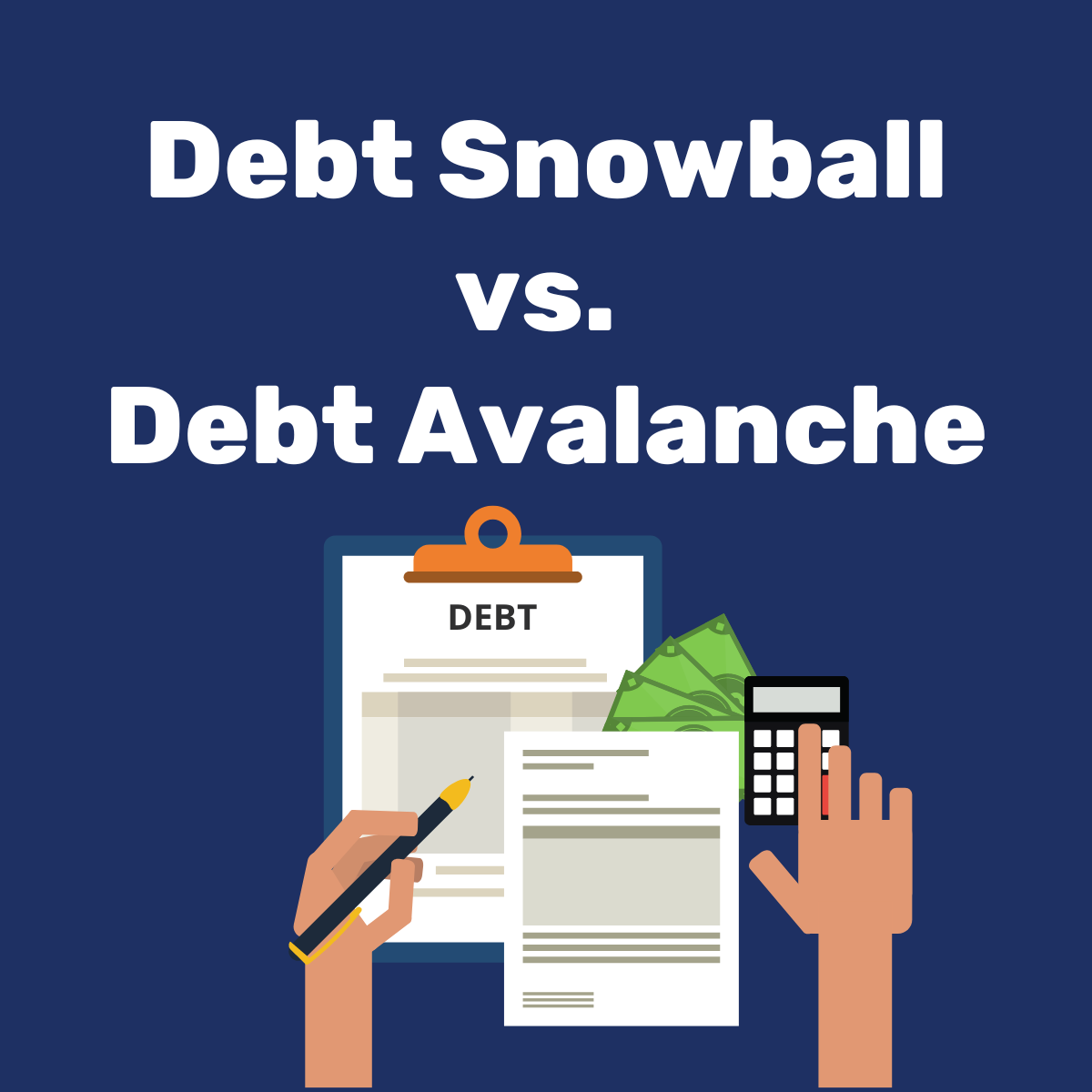About the Author
Stephany Lamas
Stephany joined the RentReporters Marketing Team in 2021.

June 8, 2022
8 mins read

As consumers, we’re likely to incur various debts across different accounts. Whether you’re newly out of college or securing a car loan, you’ll need to come up with a plan to pay down the slew of balances accumulated over time, such as student loans, car loans, credit card balances, etc.
Having several debts to pay off can seem pretty daunting. Not to worry, as we’ll be going over two different types of accelerated payment plans that promote financial responsibility: Debt Avalanche vs. Debt Snowball.
With the Debt Snowball method, you prioritize paying off your smallest debt first, regardless of the interest rate.
Completely paying off a debt eliminates a minimum payment from your budget. You then use the money you save by eliminating that minimum payment and put it towards your next smallest debt, and so on.
This allows you to pay off each debt faster by freeing up more and more money in your budget that you can then use to put towards the next debt, hence the name “Debt Snowball.”
For example, let’s say you have the following debts.
You would pay them off in the order listed below to eliminate monthly payments and put the freed money into the next biggest debt.
In this scenario, you would be paying the minimum amount due for everything other than the Credit Card 2.
Once you’ve paid off that balance, you can start paying off the next smallest balance, your student loan, and allocate the $50 payment you were making on the credit card towards the student loan to pay it faster.
With the Debt Avalanche method, instead of prioritizing your debts with the smallest balance, you prioritize paying off the debt with the highest interest rate while making the minimum payment on the rest of your debts.
Using the example from earlier, this is the order you would pay off those same debts:
For this scenario, you would pay off Credit Card 1 balance first because it has the highest interest rate. Keep in mind that you will still make the minimum payment on the rest of your bills. Once you’ve paid off Credit Card 1 balance, you can start paying off the next highest interest rate balance, which would be Credit Card 2.
The point of the debt avalanche method is to decrease the amount of interest you pay over the lifetime of your loan. The faster you pay off the highest interest debt, the less you’ll have to pay interest fees. Using the avalanche method will seem like a drag initially, but ultimately you will be saving money which is certainly never a bad thing!

In just a few minutes, discover your credit knowledge level and get instant access to a FREE credit education course tailored to you!
While both methods are intended to help you efficiently pay down your debts, they each have pros and cons. It is ultimately up to you to decide which method best suits your needs, as it all comes down to personal preference. Take a look at the pros and cons of each method to help you gauge which plan is for you.
Since this method requires you to focus on the debt with the highest interest rate, you significantly reduce the amount of interest fees incurred on the loan. You can save extra funds towards other expenses or place them into a savings account. However, you may have to wait a long time to feel the victory of zeroing out a debt — especially if your highest-interest debt is also the largest.
If your cash flow is not tight or if you have mostly variable rate debt like credit cards, you should consider a debt avalanche. Your minimum payments go down as you pay your balances, letting you pay the same amount but still pay more towards the principal.
For example, if the minimum is $150 and you pay $300, the balance goes down, and the minimum drops to $120, so you keep paying $300. Same amount but an extra $30 now goes towards the principal.
If you’re the type to appreciate the small victories, you’ll likely gravitate towards the snowball method. I prefer this method as it motivates me to eliminate my student loan debts every time I pay off a loan balance. In fact, Dave Ramsey, a prominent personal finance figure advocates for the snowball method stating, “You need some quick wins to stay pumped to get out of debt completely.” We couldn’t agree more.
If your budget is tight or you have a lot of fixed-rate debts like student or car loans, or you need the mental wins of eliminating a source of debt, snowball is the route to take. The minimum payments don’t decrease as the balance decreases with fixed-rate debt but paying off one frees up cash in your budget.
Now that we’ve gone over the basics of the two accelerated repayment plans, we hope you feel more at ease knowing that there is an effective strategy for paying down your balances. Whether you take pleasure in seeing your smaller balances diminish one by one or you’re on a mission to save as much money as possible, these methods will guide you to a better financial situation.
Stephany joined the RentReporters Marketing Team in 2021.
